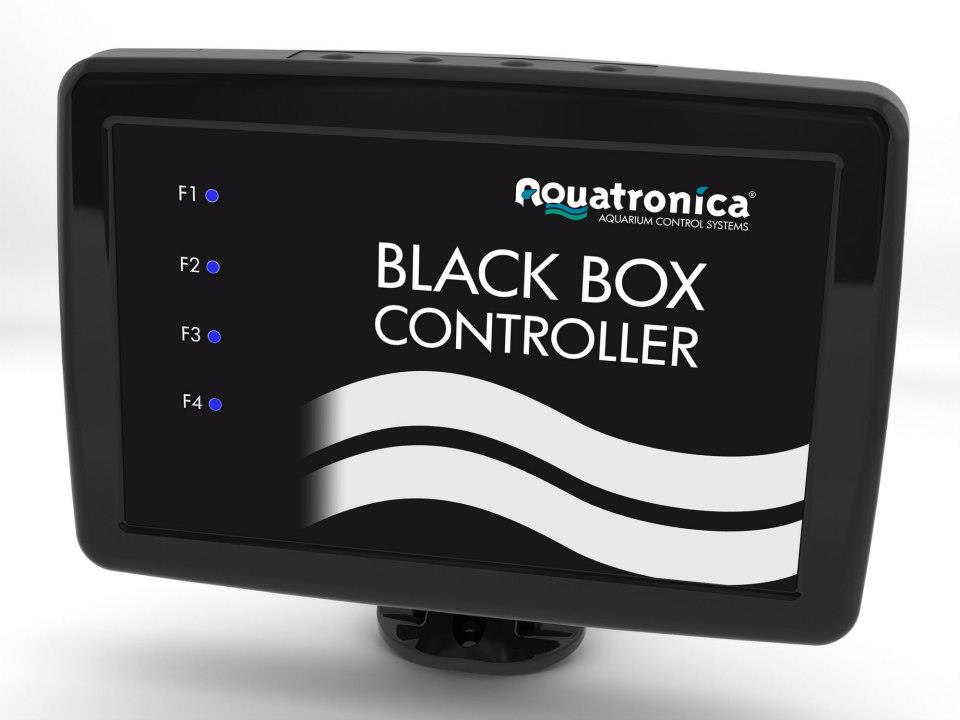Aquatronica is an European company largely known for their line of high end controllers, and was probably one of the first modular aquarium controllers to enter the market back in the day. Aquatronica has been working on a new and exciting Touch controller for the past year, but the touch controller has a lesser known brother that actually might be equally interesting. Called simply the Black Box, the controller lacks any display panels or even a user interface, and is instead controlled by something everyone already has their pockets, a smartphone. With over half the US owning a smartphone, a percentage that is likely even higher among the tech savvy reefing crowd, it makes total sense and is a great idea but the execution will be vital to the controllers success.
The Aquatronica Black Box controller looks almost identical to the Touch controller, although the touch screen has been replaced by a panel with four simple LEDs (a strange choice, but likely a decision that helps keep manufacturing costs down). The Aquatronica Touch controller runs it’s own modified software, and we’ve confirmed that the apps for your smartphone will look and feel very similar to the Aquatronica’s Touch controller.

The Aquatronica Touch controller which looks almost identical to the Black Box. We can expect the smartphone apps to feature a very similar interface
Most of the details about the Black Box controller are still under wraps, but it would be very interesting to see how exactly your portable touchscreen device would connect to the controller. Similar controllers/ monitors like the Digital Aquatics Lifeguard are plug in play connected, but use a screen to display their IP adress, something which the Aquatronica Black Box is missing. Or maybe we can expect an individual wireless network as can be found on the SunBrite wifi LED fixtures, although for a frequently used controller that wouldn’t make a whole lot of sense.
For now however all we can do is speculate, but as it appears that the Aquatronica Black Box controller is in it’s final stages of release we should find out soon enough. Exact release date is unknown but Europe might see it released before Christmas.



